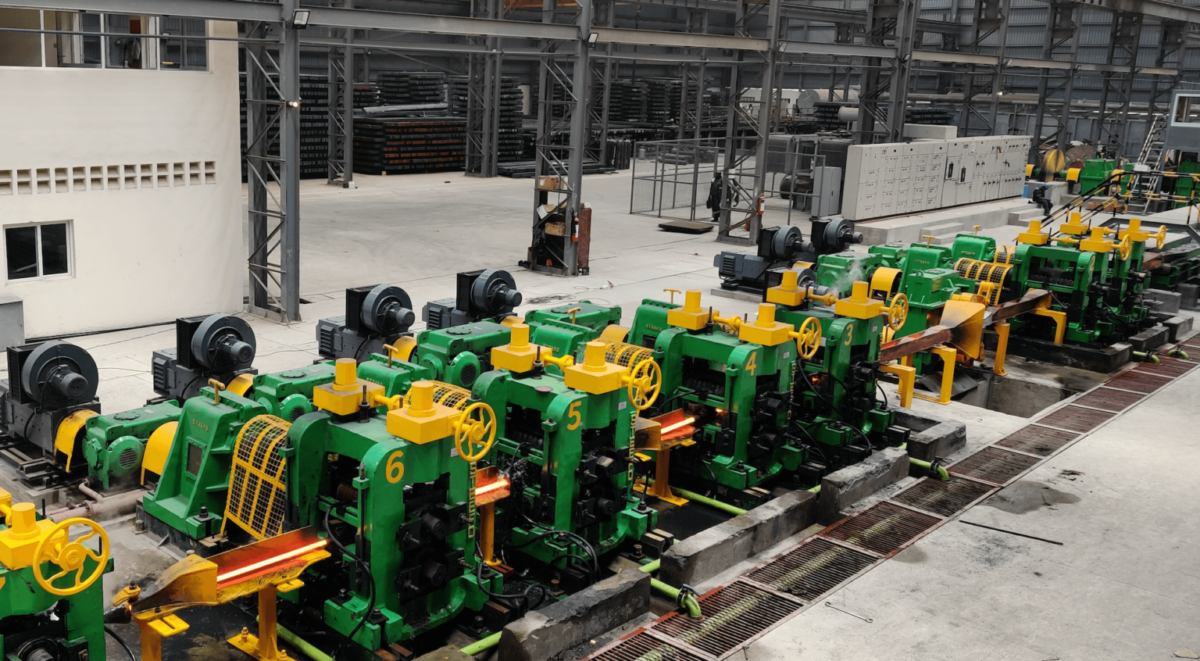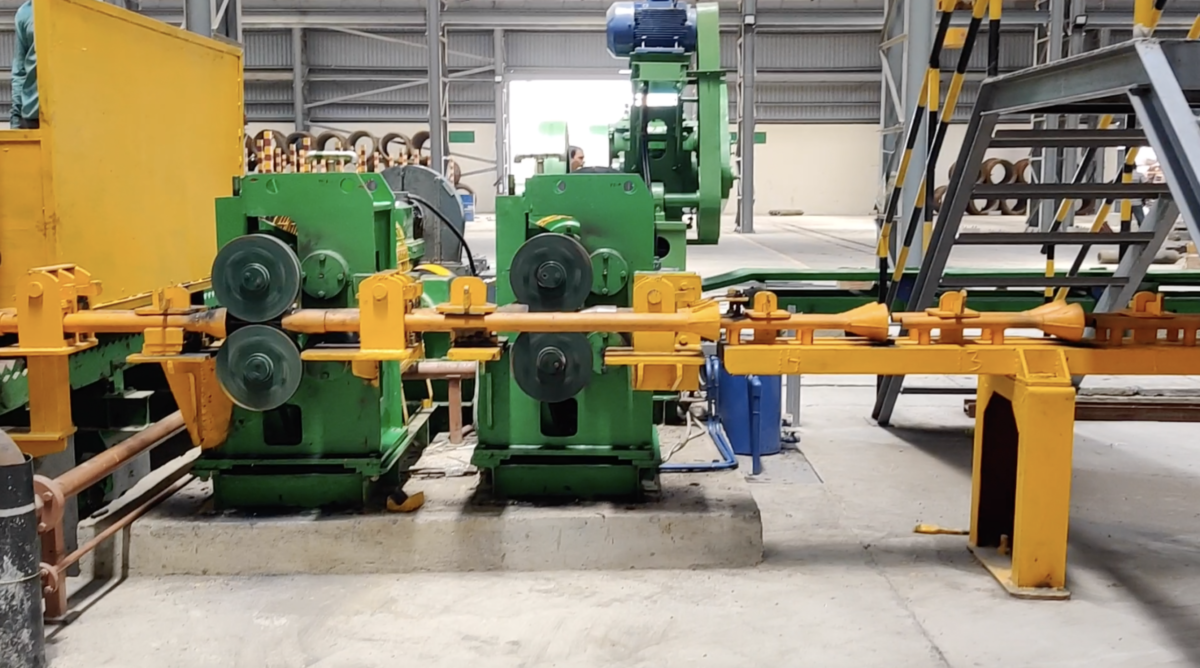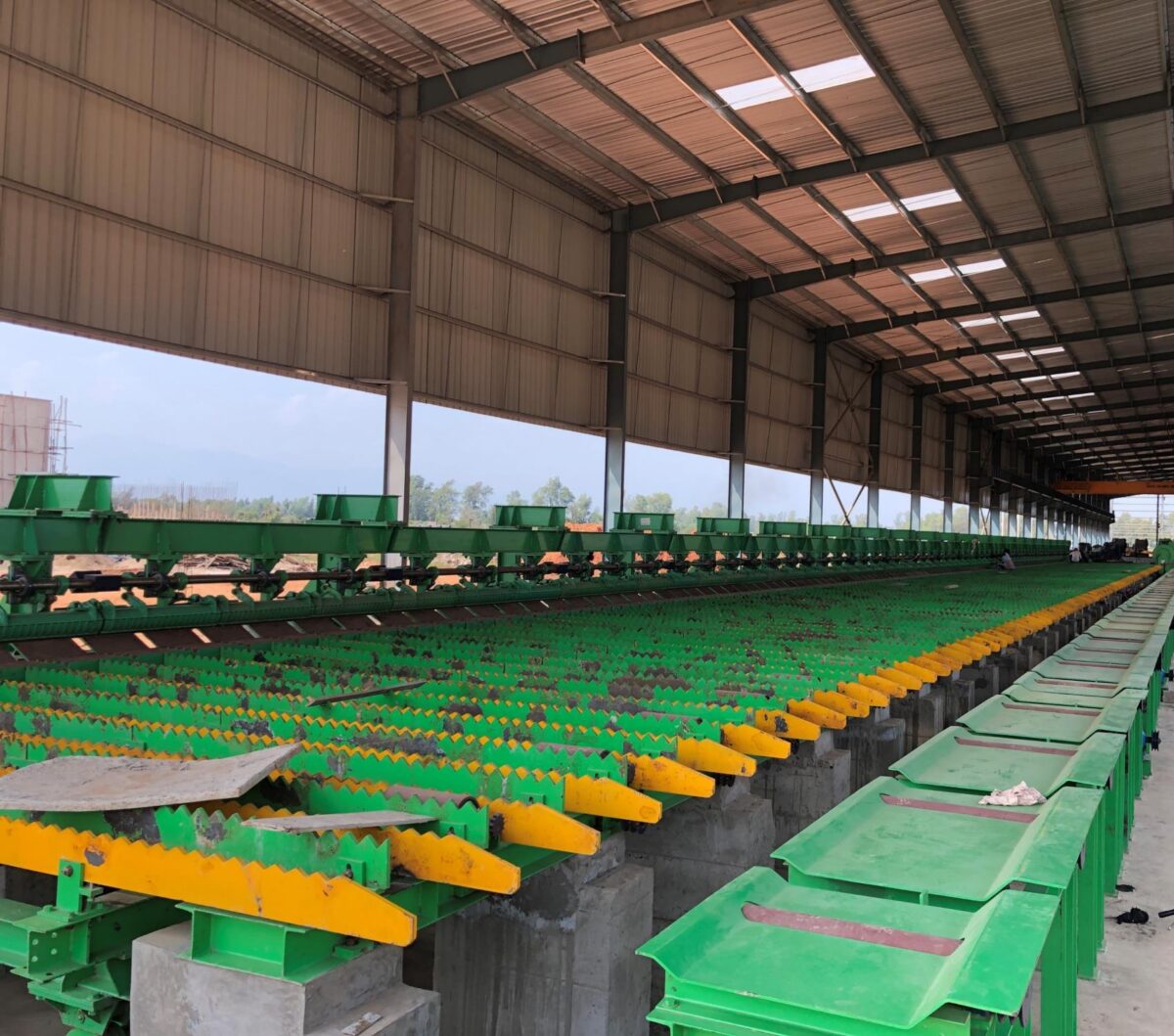In the world of steel production, staying ahead of the curve is not just a choice — it’s a necessity. For businesses operating steel rolling mills, ensuring the highest quality of structural steel is pivotal. The quest for excellence in this competitive industry can be achieved through the utilization of TMT (Thermo-Mechanically Treated) rolling mills. This cutting-edge technology has revolutionized the steel manufacturing process, making it more efficient, reliable, and environmentally friendly.
This article delves into the world of TMT rolling mills, exploring what they are, their unique features, and why steel produced in these mills is the finest choice for construction.
What is a TMT Rolling Mill?
Before we delve into the intricacies of TMT rolling mills, it’s crucial to establish a solid understanding of what they represent and how they distinguish themselves from conventional rolling mills. TMT counterparts are specialized mills meticulously designed for the production of high-quality structural steel. They employ an innovative thermo-mechanical treatment process, which sets them apart from their conventional counterparts. The process involves subjecting steel to precise heating and controlled mechanical deformation and elongation, resulting in a product boasting exceptional mechanical properties.
Unique Features of TMT Rolling Mills
1. Thermo-Mechanical Treatment
The hallmark of TMT rolling mills lies in their groundbreaking thermo-mechanical treatment process. In this process, steel is subjected to carefully controlled heating and mechanical deformation. This specialized treatment imparts remarkable strength and ductility to the steel, making it the ideal choice for structural applications.
2. Consistent Mechanical Properties
TMT rolling mills are recognised for their ability to consistently yield steel with uniform mechanical properties throughout its entire length. This consistency ensures that each section of the steel possesses the same degree of strength and flexibility, an indispensable quality for construction projects requiring uniform quality.
3. Enhanced Weldability
Steel produced by TMT rolling mills demonstrates exceptional weldability. It can be effortlessly joined with other steel components, ensuring the structural integrity of the final product and reducing the risk of defects in welded joints.
4. Minimised Residual Stresses
The thermo-mechanical treatment process employed by TMT rolling mills substantially minimizes the presence of residual stresses in the steel. This is a significant advantage as it prevents structural deformations and cracks, thereby enhancing the overall durability of the steel.
5. Eco-Friendly
These mills are meticulously designed with environmental sustainability in mind. They consume less energy and produce fewer greenhouse gas emissions compared to traditional ones, aligning with the global movement towards responsible and eco-friendly manufacturing. All processes involved in steelmaking are sustainable and the products of each process are recyclable.
6. Optimised Microstructure
The microstructure of steel produced in TMT rolling mills is characterized by its fine-grained and homogeneous nature. This unique microstructure results in excellent fatigue resistance, a critical attribute for structures that must withstand dynamic loads.
7. Corrosion Resistance
TMT steel is renowned for its exceptional resistance to corrosion, making it an enduring choice for construction in even the most challenging and corrosive environments.
Why Steel Produced in a TMT Rolling Mill is Optimal for Construction
1. Exceptional Strength
TMT rolling mills are designed to produce steel with significantly higher strength than conventional steel. This heightened strength is crucial for ensuring the structural integrity of buildings, bridges, and other vital infrastructure projects.
2. Enhanced Ductility
The superior ductility of TMT steel makes it more resistant to deformation under stress, thereby reducing the risk of brittle fractures and ensuring the safety of structures.
3. Consistency in Quality
The uniform mechanical properties of TMT steel across its entire length offer peace of mind to builders and engineers, as they can rely on its consistent performance. This eliminates concerns regarding weak points in the material, a critical factor in structural integrity.
4. Cost Savings in Construction
TMT steel’s exceptional strength enables the use of less material while achieving the same structural performance. This reduces material costs and makes transportation and construction more straightforward and cost-effective.
5. Superior Earthquake Resistance
The homogeneous microstructure and reduced residual stresses in TMT steel provide unmatched earthquake resistance, a paramount consideration in regions prone to seismic activity.
6. Efficient Welding
TMT steel’s superior weldability streamlines the construction process. It allows for quicker and more reliable assembly, ultimately leading to shorter construction timelines and cost savings.
7. Versatility
TMT steel is amenable to a wide range of construction applications, from towering high-rise buildings to robust industrial structures and cosy residential projects. Its adaptability ensures that it can meet the specific requirements of various projects.
FAQs About TMT Rolling Mills and Structural Steel Quality
1. What sets TMT Rolling Mills apart from conventional rolling mills?
TMT Rolling Mills employ thermo-mechanical treatment, which combines controlled heating and rapid cooling, resulting in steel with enhanced strength and ductility. This process sets them apart, as conventional mills do not utilize this advanced treatment, producing steel with inferior properties.
2. Is TMT steel more expensive than conventional steel?
While the initial cost of TMT steel may be slightly higher, it offers a compelling cost advantage over the long term. Reduced material wastage, lower maintenance costs, and increased structural longevity make TMT steel a cost-efficient choice for construction projects.
3. Can TMT steel be used for all types of construction?
Absolutely. TMT steel’s superior strength, uniform properties, and corrosion resistance make it suitable for a wide range of construction applications. Whether you’re building residential structures, commercial complexes, bridges, or industrial facilities, TMT steel offers the structural integrity needed for success.
4. How does TMT steel contribute to sustainability?
TMT rolling mills design steel with sustainability in mind. Its lower carbon content reduces its environmental impact, and the reduction in material wastage during production further aligns with sustainable practices. Choosing TMT steel is a conscious step toward environmentally friendly construction.
5. Can TMT steel be easily welded and shaped during construction?
Yes, one of the standout features of TMT steel is its excellent weldability and formability. Architects and engineers appreciate the flexibility it offers in creating innovative and intricate designs. TMT steel can be easily shaped and welded to meet the unique requirements of construction projects.
6. Is TMT steel safer for construction compared to conventional steel?
TMT rolling mills produce steel that enhances safety in construction. Builders and project managers can rely on its superior strength and uniformity, reducing the risk of structural failures. Safety is a top priority, and TMT Steel provides the assurance needed.
7. How does TMT steel perform in adverse weather conditions?
TMT steel’s corrosion resistance is a critical advantage in adverse weather conditions. Structures reinforced with TMT steel are better equipped to withstand the challenges posed by harsh weather, including heavy rainfall, extreme temperatures, and high humidity.
8. Can TMT steel be recycled?
Yes, TMT steel is highly recyclable. Its lower carbon content and clean production process make it an environmentally responsible choice, not just during construction but also in recycling and reusing steel materials.
9. Are there specific guidelines for using TMT steel in construction projects?
There are industry standards and guidelines for using TMT steel in construction. These guidelines cover everything from quality assurance to welding techniques. It’s essential to adhere to these standards to ensure the best results in your construction projects.
10. How can my steel rolling mill transition to TMT rolling mills?
Transitioning to TMT rolling mills requires investment in the necessary equipment and training for your workforce. It’s advisable to consult with experts and rolling mill manufacturers to guide you through the transition smoothly and ensure the successful adoption of this advanced technology.
Unlock the Future of Steel Production with Our TMT Rolling Mills
At The Steefo Group, we don’t just manufacture TMT rolling mills, we create milestones in steel production. Our cutting-edge technology and expertise are at the industry’s forefront, ensuring you have access to state-of-the-art solutions.
Why Choose Us?
Unrivaled Expertise: With decades of experience in the field, we have mastered the art of TMT rolling mills. Our team of experts ensures that every mill we manufacture is a masterpiece of precision and innovation.
Turnkey Solutions: We offer more than just machinery. We provide comprehensive turnkey solutions encompass installation, training, and ongoing support. Your success is our priority.
Quality Assurance: Our commitment to quality is unwavering. When you choose our products, you’re choosing reliability, consistency, and excellence.
Sustainable Practices: We embrace sustainability, reducing environmental impact without compromising quality. Join us in building a greener future.
Contact us at +91 87589 98607 or email us at marketing@thesteefogroup.com for any product related inquiries. Experience the difference in quality, efficiency, and innovation that we can deliver. Together, let us shape a stronger and more sustainable tomorrow.









